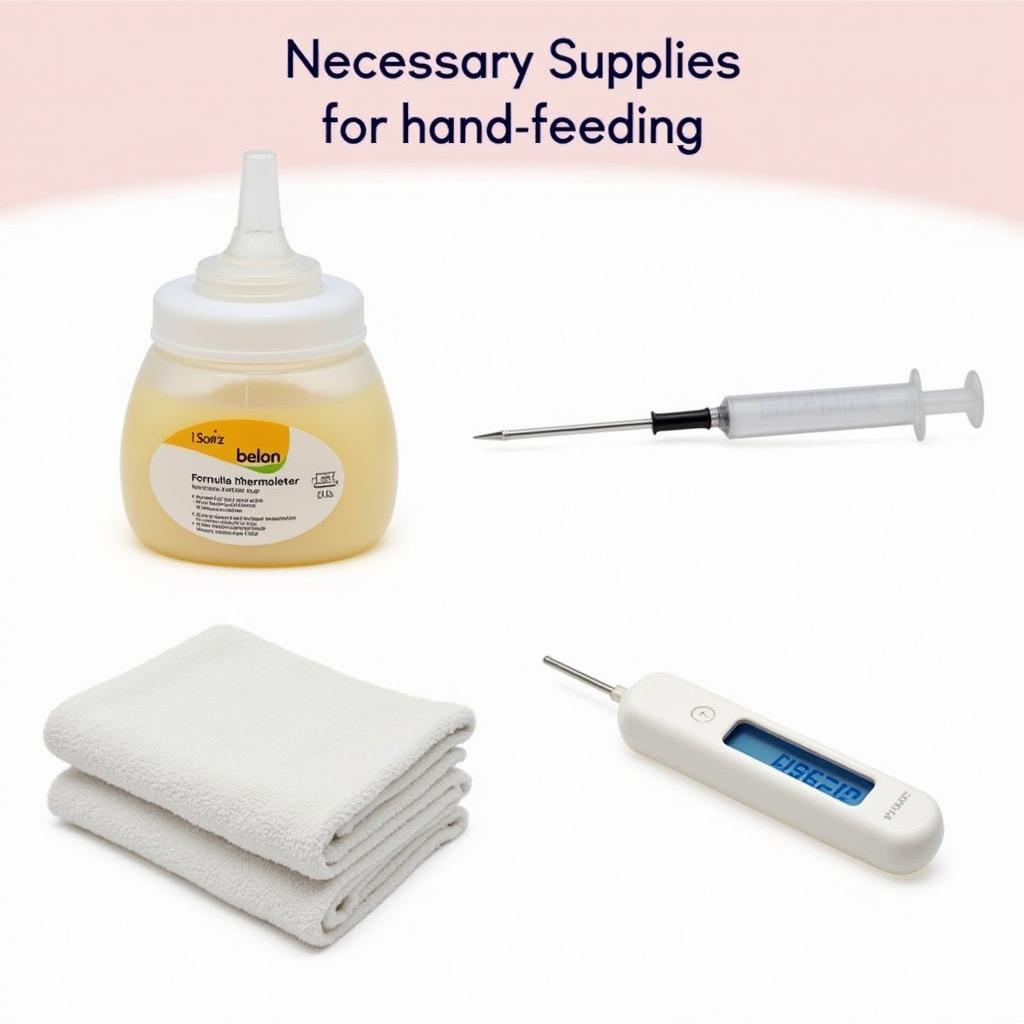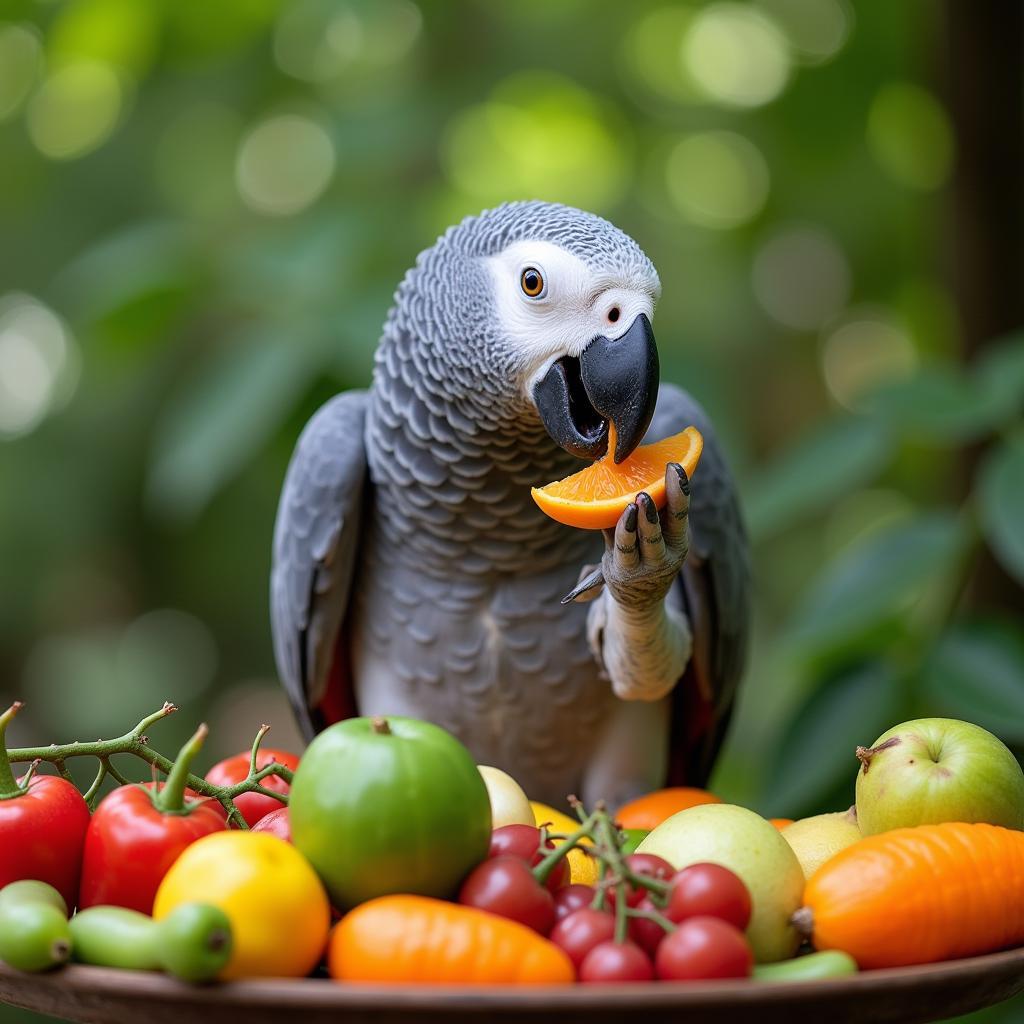African Grey Parrot Baby Feeding: A Comprehensive Guide
Hand-feeding an African grey parrot baby is a significant undertaking, requiring dedication, knowledge, and a gentle touch. Proper African Grey Parrot Baby Feeding ensures healthy growth and development, setting the stage for a long, vibrant life. This guide provides essential information for anyone considering or currently hand-feeding these intelligent and sensitive birds.
Understanding the Nutritional Needs of an African Grey Parrot Chick
African grey parrot chicks have specific dietary requirements that differ from adult birds. They require a specialized formula designed to mimic the nutritional composition of their parents’ crop milk. This formula should be the sole source of nutrition until the chick begins weaning. Choosing the right formula is crucial for your chick’s health. Look for reputable brands specifically formulated for African grey parrots. Avoid generic parrot formulas as they may lack the specific nutrients required by this species.
You should also consider the temperature of the formula. It should be warmed to approximately 105-110°F (40.5-43.3°C) before feeding. Test the temperature on your wrist; it should feel warm, not hot. Feeding formula that is too cold or too hot can be harmful to the chick. Overheating can cause crop burns, while underheating can lead to digestive issues.
After the initial few weeks, you can start introducing a small amount of softened fruits and vegetables like mashed banana or cooked sweet potato. This helps prepare the chick for weaning and introduces it to a variety of flavors and textures.
The Hand-Feeding Process: Step-by-Step Guide
Hand-feeding requires patience and precision. Follow these steps to ensure a safe and effective feeding process:
- Prepare the formula: Mix the formula according to the manufacturer’s instructions, ensuring the correct consistency and temperature.
- Position the chick: Hold the chick securely in your hand, supporting its head and neck.
- Insert the syringe: Gently insert the syringe into the chick’s crop, avoiding the trachea.
- Feed slowly: Slowly administer the formula, allowing the chick to swallow comfortably.
- Monitor the crop: Observe the crop to ensure it’s emptying properly between feedings. An overfull crop can indicate a problem.
Remember to sanitize all feeding equipment before and after each use to prevent bacterial infections. You should also weigh your chick regularly to track its growth and ensure it’s gaining weight appropriately. Consulting with an avian veterinarian is recommended for personalized guidance on hand-feeding your specific chick.
 Essential Supplies for Hand-Feeding an African Grey Parrot Baby
Essential Supplies for Hand-Feeding an African Grey Parrot Baby
Weaning Your African Grey Parrot: A Gradual Transition
Weaning is the process of transitioning a chick from formula to solid food. This should be a gradual process, typically starting around 8-12 weeks of age. Begin by offering small pieces of soft fruits, vegetables, and soaked pellets alongside the formula. As the chick begins to show more interest in solid food, gradually decrease the amount of formula offered.
The weaning age can vary depending on the individual chick, so be patient and observant. Some chicks may wean earlier or later than the average. During this period, ensure fresh water is always available. It’s essential to provide a variety of healthy foods to ensure your parrot receives a balanced diet. This includes fruits, vegetables, high-quality pellets, and a small amount of healthy seeds.
 A Weaned African Grey Parrot Enjoying Fruits and Vegetables
A Weaned African Grey Parrot Enjoying Fruits and Vegetables
Dr. Anika Sharma, an avian veterinarian specializing in African grey parrots, advises, “Patience is key during the weaning process. Each chick is unique and will transition at its own pace. Don’t rush the process, and always consult your veterinarian if you have any concerns.”
Potential Challenges and Solutions
Hand-feeding can present some challenges, but with proper knowledge and preparation, you can overcome them:
- Crop stasis: This is a condition where the crop doesn’t empty properly. If you notice the crop remaining full for an extended period, consult a veterinarian immediately.
- Bacterial infections: Maintaining strict hygiene is crucial to prevent bacterial infections. Sanitize all feeding equipment thoroughly.
- Aspiration pneumonia: This can occur if formula enters the lungs. Proper feeding technique is essential to avoid this complication.
Remember that each chick is different and will have its own quirks. Don’t get discouraged if you run into a bit of resistance or if you think things aren’t going perfect. The more information you have the better prepared you’ll be. You may even want to check out African grey weaning age for more information. You can also learn a little about African grey parrot breeding tips to gain a better understanding. If you’re interested in getting your own baby, it’s important to check out the african grey parrot baby price in kerala.
Conclusion
African grey parrot baby feeding is a rewarding but demanding task. By following these guidelines, providing proper nutrition, and maintaining a clean environment, you can help your African grey parrot chick thrive and grow into a healthy, happy companion. Remember, patience and consistent care are crucial for success in african grey parrot baby feeding.
FAQ
- How often should I feed an African grey parrot chick?
- What are the signs of a healthy African grey parrot chick?
- When should I start weaning my African grey parrot?
- What foods should I avoid feeding my African grey parrot?
- How can I tell if my African grey parrot chick is dehydrated?
- What should I do if my African grey parrot chick regurgitates food?
- How can I socialize my hand-fed African grey parrot?
You may also be interested in topics such as African children could have eaten or African grey parrot sitting on eggs.
If you need assistance, please contact us at Phone: +255768904061, Email: [email protected] or visit us at Mbarali DC Mawindi, Kangaga, Tanzania. We have a 24/7 customer support team.
